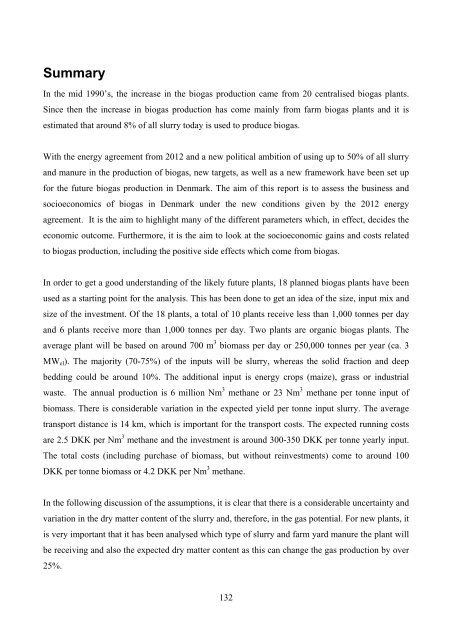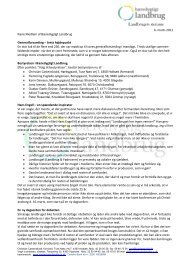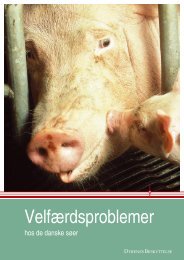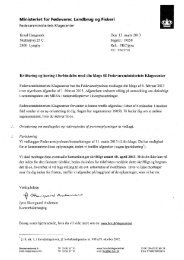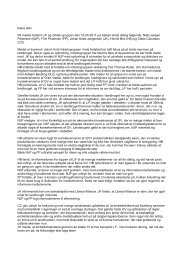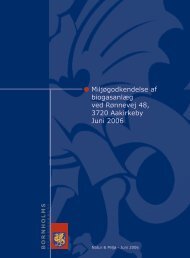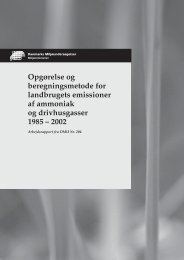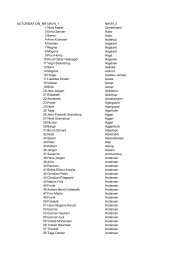Se rapporten her - Sickpigs.dk
Se rapporten her - Sickpigs.dk
Se rapporten her - Sickpigs.dk
Create successful ePaper yourself
Turn your PDF publications into a flip-book with our unique Google optimized e-Paper software.
SummaryIn the mid 1990’s, the increase in the biogas production came from 20 centralised biogas plants.Since then the increase in biogas production has come mainly from farm biogas plants and it isestimated that around 8% of all slurry today is used to produce biogas.With the energy agreement from 2012 and a new political ambition of using up to 50% of all slurryand manure in the production of biogas, new targets, as well as a new framework have been set upfor the future biogas production in Denmark. The aim of this report is to assess the business andsocioeconomics of biogas in Denmark under the new conditions given by the 2012 energyagreement. It is the aim to highlight many of the different parameters which, in effect, decides theeconomic outcome. Furt<strong>her</strong>more, it is the aim to look at the socioeconomic gains and costs relatedto biogas production, including the positive side effects which come from biogas.In order to get a good understanding of the likely future plants, 18 planned biogas plants have beenused as a starting point for the analysis. This has been done to get an idea of the size, input mix andsize of the investment. Of the 18 plants, a total of 10 plants receive less than 1,000 tonnes per dayand 6 plants receive more than 1,000 tonnes per day. Two plants are organic biogas plants. Theaverage plant will be based on around 700 m 3 biomass per day or 250,000 tonnes per year (ca. 3MW el ). The majority (70-75%) of the inputs will be slurry, w<strong>her</strong>eas the solid fraction and deepbedding could be around 10%. The additional input is energy crops (maize), grass or industrialwaste. The annual production is 6 million Nm 3 methane or 23 Nm 3 methane per tonne input ofbiomass. T<strong>her</strong>e is considerable variation in the expected yield per tonne input slurry. The averagetransport distance is 14 km, which is important for the transport costs. The expected running costsare 2.5 DKK per Nm 3 methane and the investment is around 300-350 DKK per tonne yearly input.The total costs (including purchase of biomass, but without reinvestments) come to around 100DKK per tonne biomass or 4.2 DKK per Nm 3 methane.In the following discussion of the assumptions, it is clear that t<strong>her</strong>e is a considerable uncertainty andvariation in the dry matter content of the slurry and, t<strong>her</strong>efore, in the gas potential. For new plants, itis very important that it has been analysed which type of slurry and farm yard manure the plant willbe receiving and also the expected dry matter content as this can change the gas production by over25%.132


